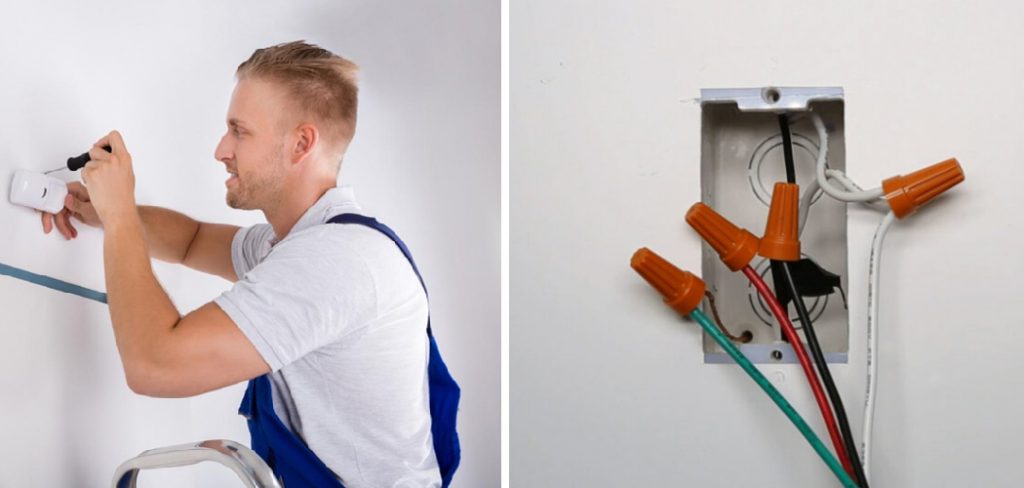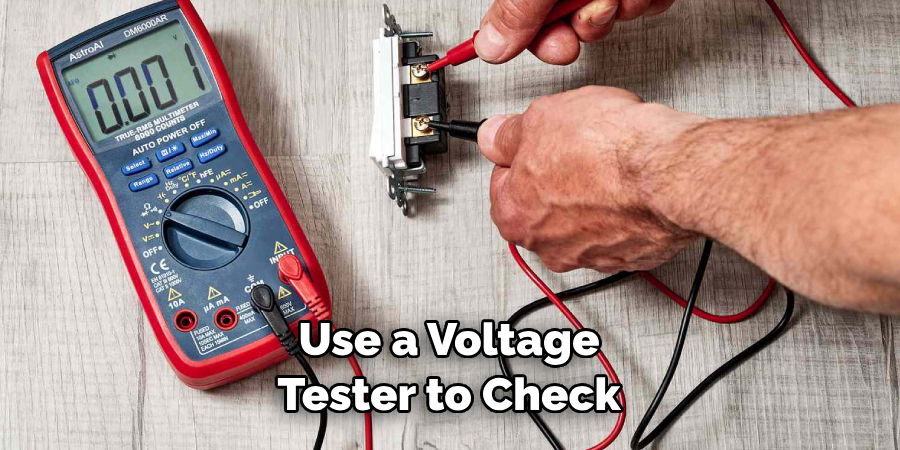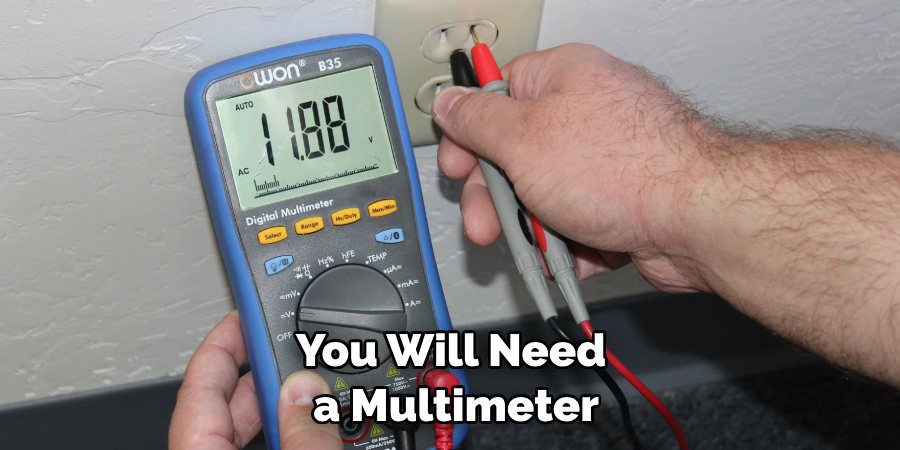Are you looking to give your home the upgrade it deserves? Adding motion sensors to your existing lights can not only help save energy but make life more convenient. Eliminating the need to flip a switch with each use of a light adds an extra level of convenience, and also offers added security for when you’re away from your home.

In this blog post, we’ll show you how to add motion sensor to existing light so you can automate your lighting expectations at any time!Adding a motion sensor to an existing light can be the perfect way to do just that! Motion sensors are cost-effective, easy to install, and increase safety in your home – while helping you reduce electricity costs.
Here, we’ll discuss how you can add a motion sensor switch to an existing light fixture with confidence. We’ll provide helpful tips for wiring it correctly so you can get the most out of this smart technology. Ready for some DIY fun? Read on!
Why Do You Want to Add a Motion Sensor to Existing Light?
1 . To Improve the Security of Your Place
Adding a motion sensor to your existing light can significantly improve the security and safety of your home or workplace. When a motion is detected in an area, the lights will automatically turn on, alerting you and potential intruders that someone is present in the area. This gives you peace of mind as well as provides extra deterrence against potential robbers or vandals.
2 . To Increase Energy Efficiency
By having a motion sensor on your existing light, you can also save energy and money by having the lights turn off automatically when no movement is detected in an area. This ensures that there’s no wasted energy being used to unnecessarily keep your lights on all night long. You’ll enjoy both peace of mind and lower electricity bills in the long run.
3 . To Enhance Visual Aesthetics
Having a motion sensor on your existing light can also help enhance the aesthetic of your space by providing an extra layer of illumination when needed. This can give you a warm, inviting atmosphere for entertaining guests or to simply enjoy some time alone after a long day.
What You Will Need to Add a Motion Sensor to Existing Light
To add a motion sensor to existing light, you’ll need the following tools and materials:
- Screwdriver
- Motion sensor switch with wiring kit
- Electrical tape or wire nuts
- Wire cutter/stripper
- Voltage tester
How to Add Motion Sensor to Existing Light in 5 Easy Steps
Step 1: Shut off the Power at Your Electrical Panel

Before you begin any work with electrical wiring, make sure that you shut off power at your main electrical panel. This will prevent any potential electric shock or injury while you are working with the wires.
Step 2: Remove the Existing Light Switch
Using a screwdriver, remove the existing light switch and carefully pull it out of the wall. You’ll then need to use your wire cutter/stripper to remove about 6 inches of sheathing from the wires to access the bare copper wiring.
Step 3: Install the Motion Sensor Switch
Take your motion sensor switch and carefully insert it into the wall, making sure to follow the manufacturer’s instructions for proper installation. Once you’ve inserted the switch, attach the bare copper wires from your existing light to the corresponding terminals on your motion sensor switch. Secure all connections with electrical tape or wire nuts.
Step 4: Turn on the Power
Turn the power back on at your main electrical panel and test your motion sensor switch to make sure it is working properly. Use a voltage tester to verify that there is no electric current flowing through the wires.
Step 5: Enjoy Your New Motion Sensing Light
Once you’ve completed all of these steps, your motion-sensing light should be good to go. Enjoy the improved safety, energy efficiency, and visual aesthetics that come with having a motion sensor on your existing light.
Some Additional Tips to Add Motion Sensors to Existing Light
1 . Read the Instructions Carefully
Whenever you’re working with electricity, it’s important to read and follow all instructions provided by the manufacturer of your motion sensor switch. This will help ensure that you don’t make any mistakes while wiring or installing your device.
2 . Test All Connections

Make sure to use a voltage tester to check all of your connections before turning the power back on. This will help to ensure that everything is wired properly and also prevent any potential electric shocks or injuries.
3 . Consider Professional Installation
If you’re not comfortable with wiring and installing a motion sensor switch yourself, it may be best to consult an electrician for professional advice and assistance with this type of project. This will help to ensure that everything is done properly and safely, giving you peace of mind that your motion sensor switch is installed correctly.
Adding a motion sensor to existing light can be a great way to increase security, energy efficiency, and visual aesthetics in your home or workplace. With the right tools and materials, it’s an easy process that anyone can do in a matter of minutes. Keep these tips in mind and you’ll be sure to enjoy the benefits of your new motion-sensing light in no time!
Frequently Asked Questions
What Precautions Should I Take When Connecting a Motion Sensor to an Existing Light?
When connecting a motion sensor to an existing light, it is important to take proper safety precautions. Make sure that the wiring and connections are up-to-code and that all of your tools are properly grounded. It is best practice to wear protective gear when working with electricity, such as rubber gloves and safety glasses. Additionally, make sure to turn off the electricity at the circuit breaker before you begin your work.
What Are the Benefits of Adding a Motion Sensor to an Existing Light?
Adding a motion sensor to an existing light can have several benefits. Firstly, it can increase safety by automatically turning on lights when someone enters a room or area. This is especially helpful for bathrooms, hallways, and staircases. Secondly, motion sensors can help save energy by detecting when people are not in a given room or area and turning off the light automatically.
Lastly, motion sensors can add convenience by allowing you to easily control lights with your smartphone or other device.
What Types of Motion Sensors Are Available?

There are many different types of motion sensors available on the market. Passive Infrared (PIR) sensors detect temperature changes and are great for use indoors, while Ultrasonic sensors use sound waves to detect movement and are better suited for outdoor applications.
Additionally, there are Dual Technology (DT) sensors that combine both PIR and Ultrasonic technology to create a sensor that is less prone to false alarms.
What Are Some Things to Look for When Purchasing a Motion Sensor?
When purchasing a motion sensor, there are several factors to consider. Firstly, you should make sure the sensor has an adjustable range so it can be set to detect movement within your desired area of coverage. Secondly, look for a motion sensor that has adjustable time delay settings so you can customize when and how long lights will stay on.
Lastly, consider investing in a motion sensor with features such as dusk-to-dawn control or daylight dimming, which can help increase energy efficiency.
What Tools Will I Need to Install a Motion Sensor?

Installing a motion sensor typically requires basic electrical tools such as wire strippers, a drill, and a screwdriver. Additionally, you will need a multimeter to test for voltage before beginning the installation process. Depending on your setup, you may also need additional tools such as an outlet box or jumper wires. It is important to make sure that all of your electrical connections are up-to-code before completing the installation process.
What Are Some Tips for Troubleshooting Common Motion Sensor Issues?
If you are experiencing issues with your motion sensor, the first step is to make sure that all of the wiring and connections are correct. If everything looks correct but the sensor is still not working properly, check to see if the range or sensitivity settings are set correctly.
Conclusion
With the right steps and materials, you can easily add a motion sensor to your current light fixture and take one step closer to smart home living. To fully complete your progress, be sure to read the instructions carefully and double-check that all connections are working.
Now you know how to add motion sensor to existing light! Once you get the hang of it, this project is an excellent way to gain confidence in your DIY skills and reap the benefits of up-to-date technology. Don’t let lack of experience discourage you from bringing convenience and safety into your home; give it a try today!
About
Safety Fic is a distinguished figure in the world of Diy design, with a decade of expertise creating innovative and sustainable Diy solutions. His professional focus lies in merging traditional craftsmanship with modern manufacturing techniques, fostering designs that are both practical and environmentally conscious. As the author of diy, Safety Fic delves into the art and science of Safety Fic-making, inspiring artisans and industry professionals alike.
Education RMIT University
(Melbourne, Australia) Associate Degree in Design (Safety Fic) Focus on sustainable design, industry-driven projects, and practical craftsmanship. Gained hands-on experience with traditional and digital manufacturing tools, such as CAD and CNC software.
Nottingham Trent University
(United Kingdom) Bachelor’s in diyfastly.com and Product Design (Honors) Specialized in product design with a focus on blending creativity with production techniques. Participated in industry projects, working with companies like John Lewis and Vitsoe to gain real-world insights.
Publications and Impact
In diy, Safety Fic his insights on indoor design processes, materials, and strategies for efficient production. His writing bridges the gap between artisan knowledge and modern industry needs, making it a must-read for both budding designers and seasoned professionals.
